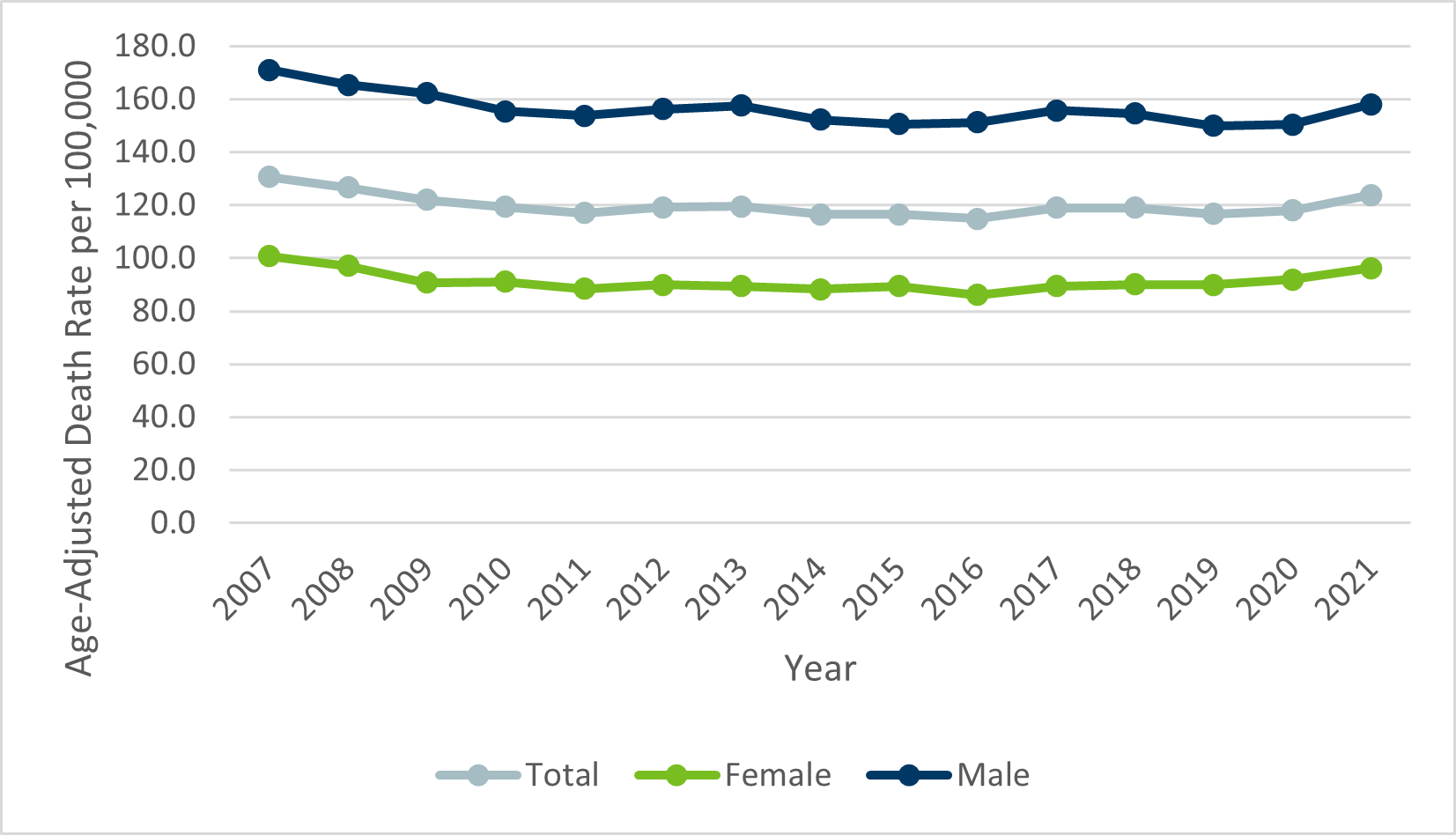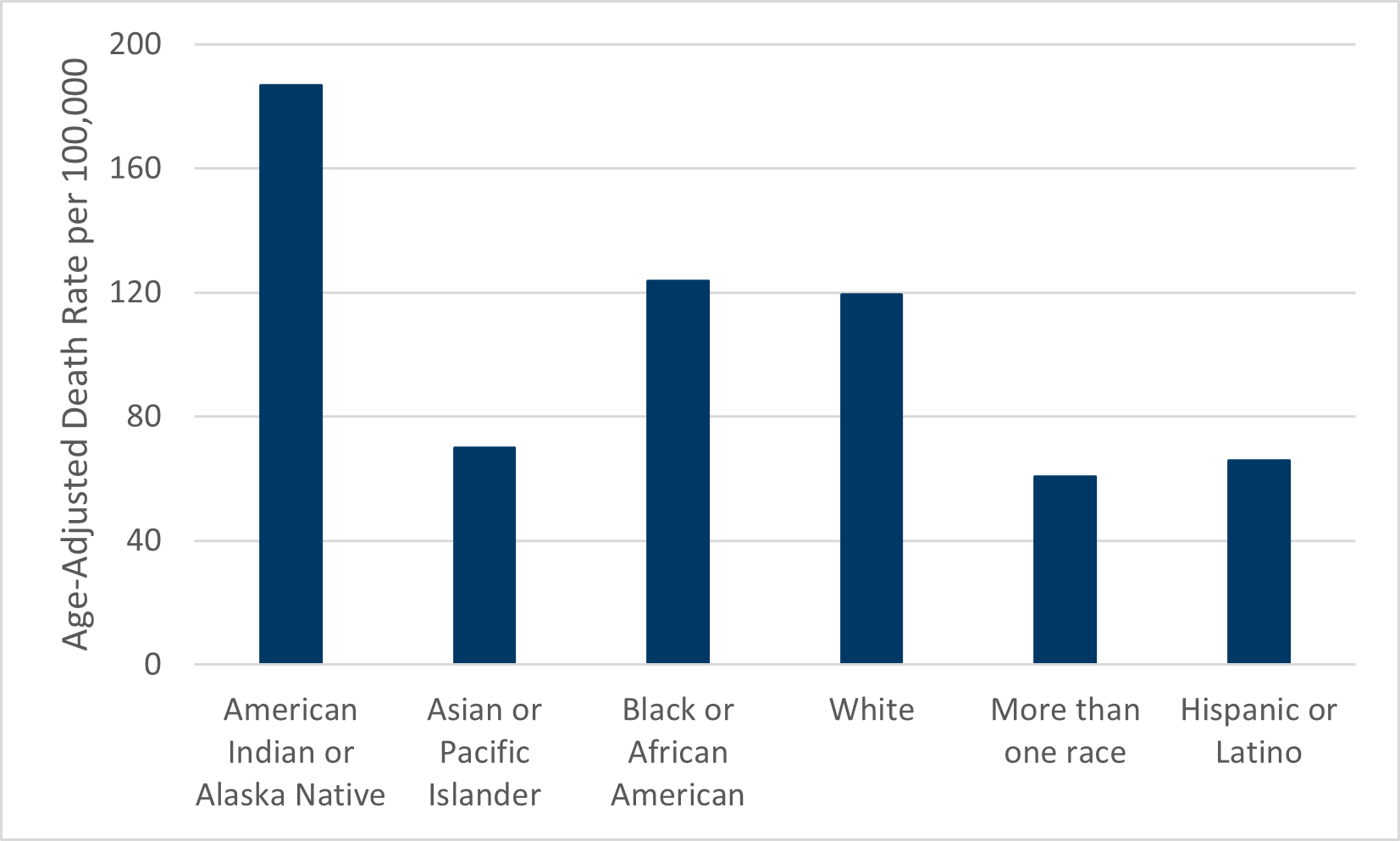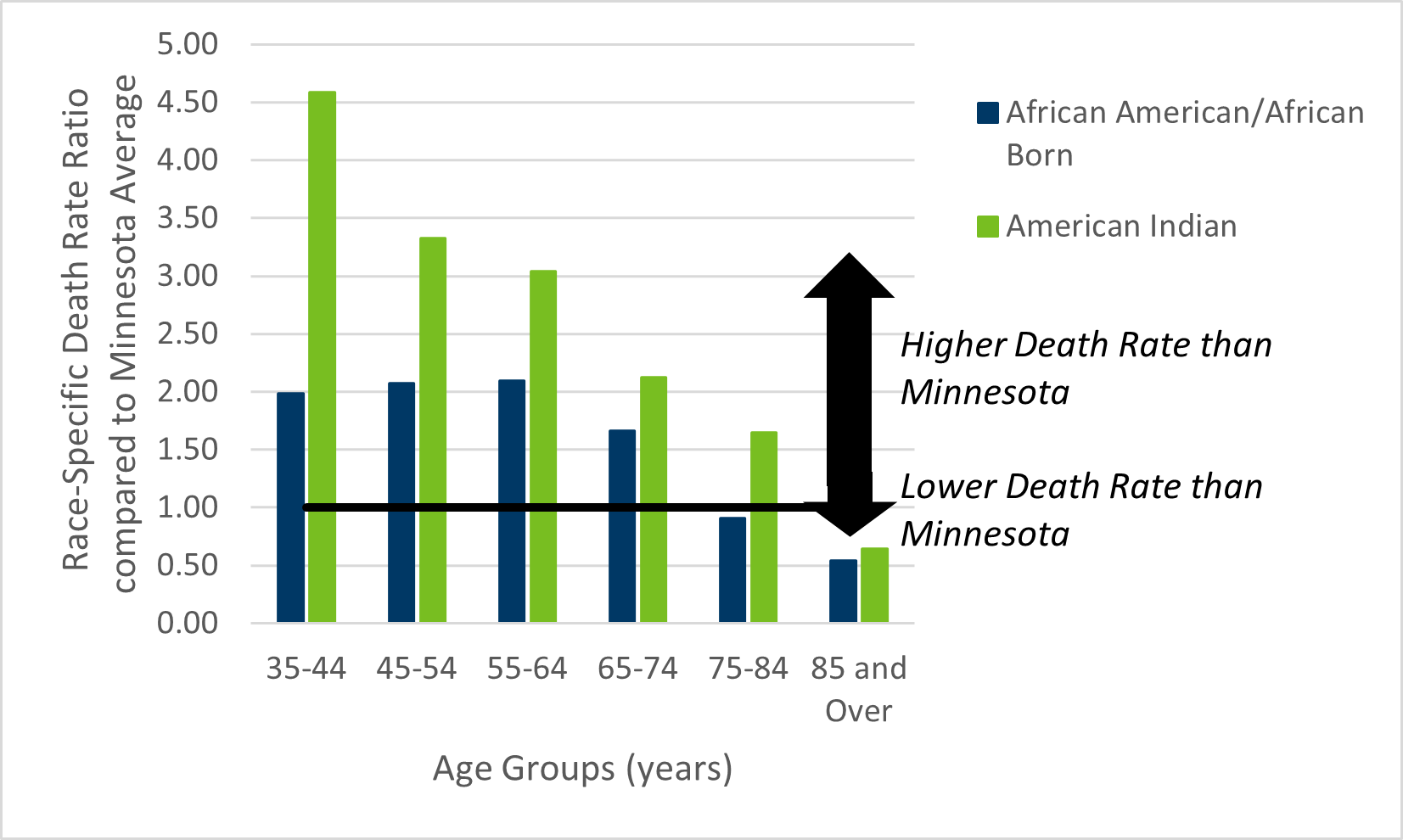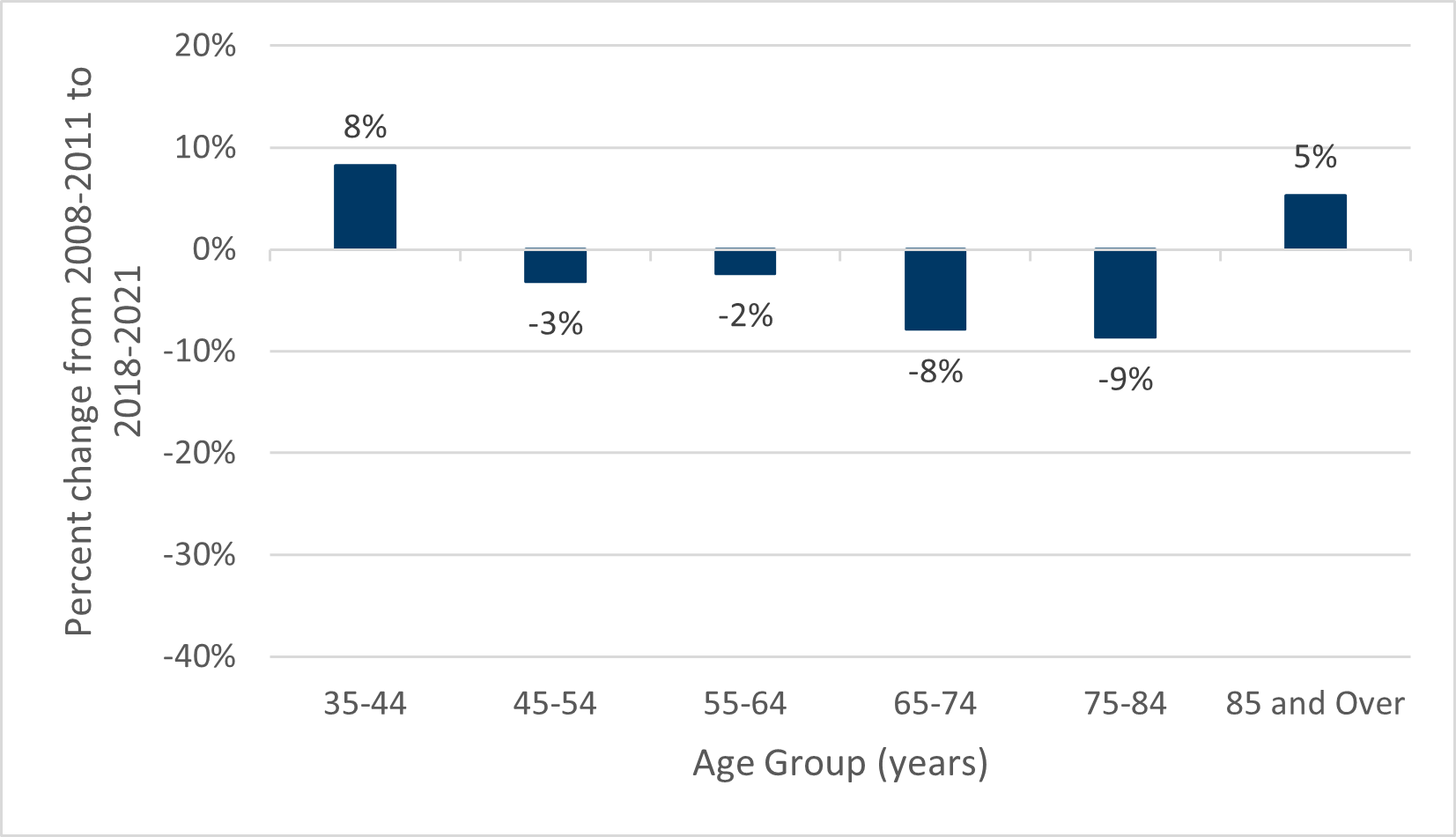Cardiovascular Health
- Cardiovascular Health Home
- CVH Data and Trends
- CVH Programs & Resources
- Minnesota 2035 Plan
- Minnesota Stroke Program
- About Us
Learn More
Related Topics
Contact Info
Cardiovascular Health Program
Cardiovascular Health Indicator
Measure: Heart Disease Death Rate
| Indicator | Date of Most Recent Measure | Current Measure | Trend |
|---|---|---|---|
| Age-adjusted mortality rate due to heart disease | 2021 | 123.9 per 100,000 | Stable |
Overview
- Heart disease is the second-leading cause of death in Minnesota, responsible for 16.6% of all deaths in 2021. This is a lower proportion of overall deaths than is typical, as COVID-19 became the third-leading cause of death in 2020.
- Minnesota’s heart disease death rate has been lowest of all states since 1999, and is 29% lower than the United States average in 2021.
- In Minnesota, American Indian people die from heart disease at much higher rates than every other race and ethnic group, at more than 50% higher than Minnesotans overall. These disparities in deaths are rooted in historical inequities that have persisted in the United States and Minnesota for many years.
- Heart disease deaths have been dropping for decades, but this trend has stopped. In 2020 and 2021, there were more than 1,400 additional deaths due to heart disease compared to 2010 (up almost 20%), but the overall heart disease death rate hasn't changed much.
See Also:
Last Updated: 10/11/2023



